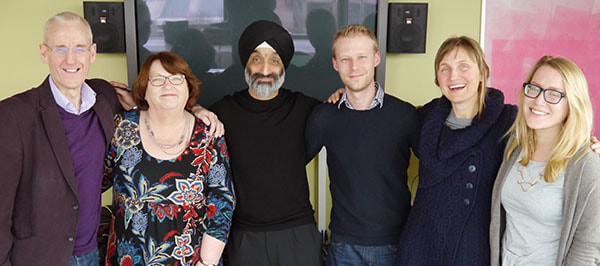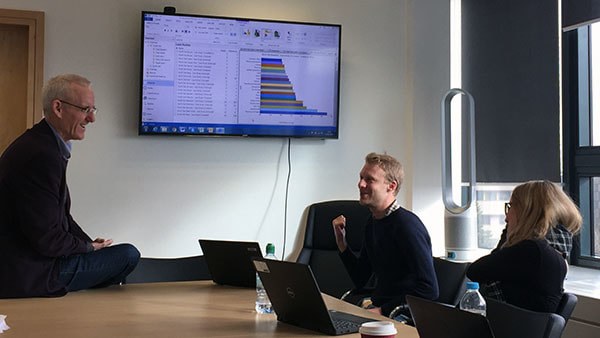Our research
Background
Although a large research literature now exists on social work and child protection, surprisingly little of this concerns what social workers actually do. No research that gets close enough to observe practice has been done into long-term social work.
Although a large research literature now exists on social work and child protection, surprisingly little of this concerns what social workers actually do. No research that gets close enough to observe practice has been done into long-term social work.
|
Our Research
The study focused on long-term social work and child protection practice and the core research questions were:
|
What we did
Researchers spent 15 months embedded in two social work departments with different office designs, one was hot-desking and the other in small team rooms where staff had their own desks.
A total of 402 days was spent in the field, 201 days at each site.
Ethnographic methods were used to observe and audio-record encounters between social workers and children and other family members in a sample of 30 cases that were shadowed for up to a year. Service users in the same cases were interviewed at up to three points during the 12 months.
Researchers spent 15 months embedded in two social work departments with different office designs, one was hot-desking and the other in small team rooms where staff had their own desks.
A total of 402 days was spent in the field, 201 days at each site.
Ethnographic methods were used to observe and audio-record encounters between social workers and children and other family members in a sample of 30 cases that were shadowed for up to a year. Service users in the same cases were interviewed at up to three points during the 12 months.
Case studies
12 cases were shadowed for a full 12 months, two for 11 and a total of 28 were shadowed for at least six months. As anticipated, some of the sample of 30 were closed by the system before reaching 12 months of being shadowed, which was a virtue for the study as it enabled analysis of the practice and changes that led social care involvement to end.
12 cases were shadowed for a full 12 months, two for 11 and a total of 28 were shadowed for at least six months. As anticipated, some of the sample of 30 were closed by the system before reaching 12 months of being shadowed, which was a virtue for the study as it enabled analysis of the practice and changes that led social care involvement to end.
|
Organisational life
At the same time a detailed ethnography of organisational practices and staff supervision was conducted with the same staff involved in the case work. We observed a total of 271 practice encounters between social care staff and service users. Of these: 146 were home visits, 10 of these were by family support workers and the rest by social workers and managers. 30 were interviews and other types of work with families in the office. Eight in courts, six in hospitals and six where children were seen in schools. |
We also observed 75 multi agency meetings directly related to the 30 cases we shadowed, 37 of which were case conferences, 32 ‘core groups’ at which professionals along with family members take forward case conference plans and six were Children in Need meetings that involved children who were not on child protection plans.
In addition, 54 staff supervisions were observed and 54 interviews took place with families, some of which involved up to three interviews with the same families over the course of the year. Another seven ‘Professionals Meetings’ were observed that family members were not invited to attend.
In addition, 54 staff supervisions were observed and 54 interviews took place with families, some of which involved up to three interviews with the same families over the course of the year. Another seven ‘Professionals Meetings’ were observed that family members were not invited to attend.
This has produced rich longitudinal case-studies of practice and organisational life.
For a two-minute overview of our ethnographic research approach, please click here.
More information about our published articles click here.



